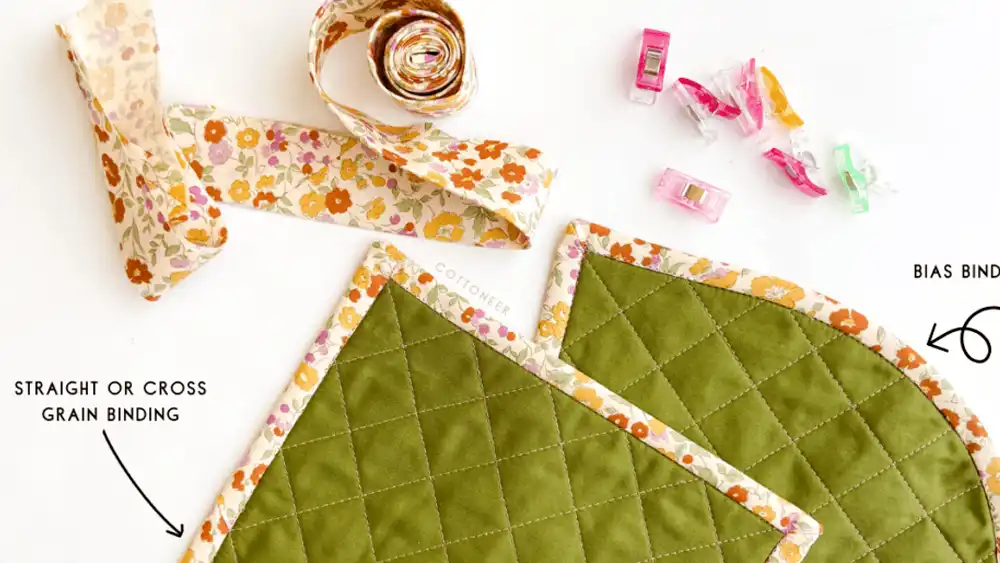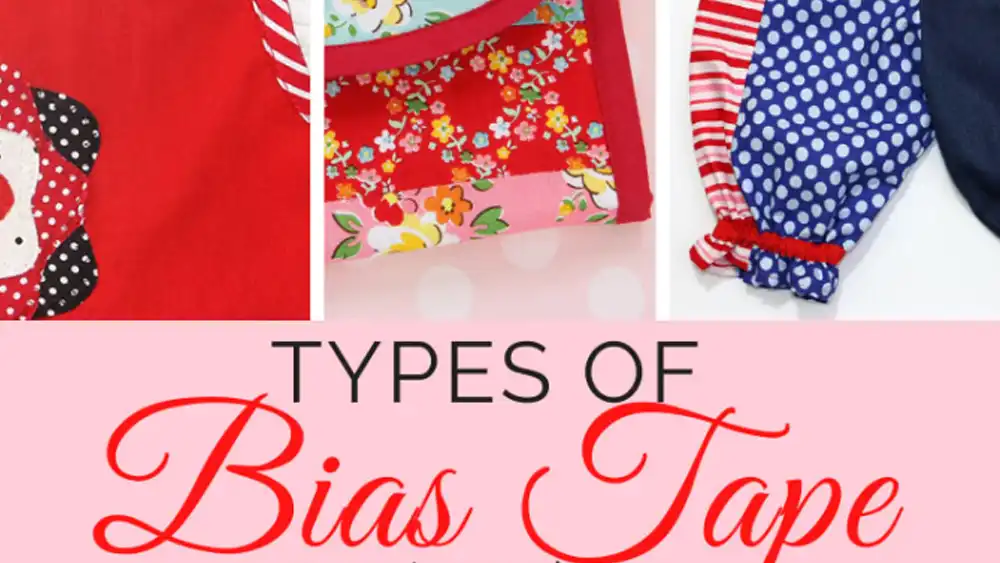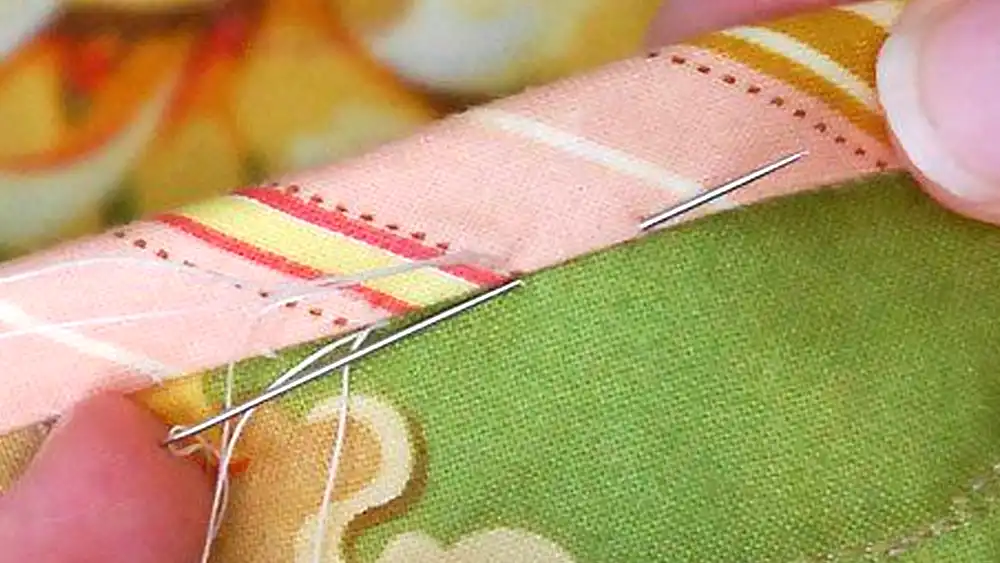Quilting is a timeless craft that weaves together fabric, creativity, and tradition. Central to the art of quilting is the binding fabric, a crucial element that adds both functionality and aesthetic appeal to quilts.
In this comprehensive guide, we delve into the world of binding fabric in quilting, exploring its importance, techniques, and FAQs to help you elevate your quilting projects.
What Is Binding?

Binding, in the context of quilting, refers to the process of enclosing the raw edges of a quilt with a strip of fabric to create a neat and finished look. This strip of fabric, known as binding fabric, serves both practical and aesthetic purposes.
It not only secures the layers of the quilt together but also adds a decorative element to the quilt’s edges. Binding is essential for giving quilts a polished appearance and ensuring their longevity.
What is Binding Fabric in Quilting?
Binding fabric in quilting refers to the strip of fabric used to encase the raw edges of a quilt, providing a clean and polished finish. It serves to secure the layers of the quilt together while enhancing the quilt’s appearance. Binding fabric plays a crucial role in quilting, not only for its functional purpose but also for adding a decorative touch to the finished quilt.
Types of Binding Fabric

There are several types of binding fabric commonly used in quilting, each offering unique characteristics and advantages. Here’s a deeper look into these types:
Cotton Binding Fabric:
Cotton fabric is a popular choice for binding due to its versatility, durability, and wide range of colors and prints. It provides a crisp and clean finish to the edges of the quilt, making it suitable for various quilting projects.
Bias Binding Fabric:
Bias binding fabric is cut on the diagonal grain of the fabric, offering greater flexibility and stretch compared to straight grain binding. This flexibility makes bias binding ideal for quilts with curved edges, as it can easily conform to the shape without puckering or distortion.
Double-Fold Binding Fabric:
Double-fold binding involves folding the fabric edges twice to create a sturdy binding that encases the quilt’s raw edges securely. This type of binding provides added strength and durability to the quilt’s edges, making it suitable for quilts that will undergo frequent washing and use.
Single-Fold Binding Fabric:
Single-fold binding is a simpler option where the fabric is folded only once to cover the raw edges of the quilt. While not as sturdy as double-fold binding, single-fold binding is suitable for lightweight quilts or decorative wall hangings where durability is less of a concern.
Each type of binding fabric offers its advantages, allowing quilters to choose the most appropriate option based on the specific requirements of their project. Whether it’s cotton for its versatility, bias for its flexibility, or double-fold for its durability, selecting the right binding fabric is essential for achieving a professional and polished finish to your quilts.
Tips for Choosing and Preparing Binding Fabric

Choosing and preparing binding fabric is a crucial step in the quilting process, as it can significantly impact the overall look and durability of your quilt. Here are some tips to help you select and prepare the perfect binding fabric:
Selecting the Right Fabric:
- Consider Durability: Choose a binding fabric that is sturdy and durable, as it will be subjected to wear and tear along the quilt’s edges.
- Match the Quilt Style: Select a fabric that complements the colors, patterns, and theme of your quilt, enhancing its overall aesthetic appeal.
- Check Washability: Opt for a fabric that is easy to care for and can withstand repeated washing, especially if the quilt will be used regularly.
Calculating Binding Length:
- Measure the Perimeter: Determine the perimeter of your quilt by adding the lengths of all four sides.
- Add Extra Length: Add a few inches to the calculated perimeter to account for corners, seams, and overlap when joining the binding ends.
- Consider Seam Allowance: Factor in the seam allowance for joining the binding strips to ensure you have enough fabric for a seamless finish.
Cutting and Joining Strips:
- Bias or Straight Grain: Decide whether to cut your binding fabric on the bias or straight grain. Bias binding offers more flexibility, while straight grain binding may be easier to work with for beginners.
- Diagonal Seams: Join the binding fabric strips together with diagonal seams to minimize bulk and create a smooth transition between strips.
Pressing and Folding Techniques:
- Pressing: Use an iron to press the binding fabric strips, ensuring crisp edges and smooth folds.
- Folding: Fold the binding fabric in half lengthwise, wrong sides together, to create a double-fold binding. Press the fold to secure it in place before attaching it to the quilt.
By following these tips, you can confidently choose and prepare binding fabric that not only complements your quilt but also enhances its durability and longevity. Taking the time to select the right fabric and prepare it properly will result in a beautifully finished quilt that you can cherish for years to come.
Binding Fabric Applications

Binding fabric application refers to the process of attaching the binding fabric to the edges of a quilt to provide a clean and finished appearance. There are various techniques for applying binding fabric, including:
Hand Binding:
Hand binding involves stitching the binding fabric to the quilt’s edges by hand using a needle and thread. This method allows for meticulous control and precision, resulting in a seamless finish. Hand binding is often preferred for heirloom quilts or projects where a traditional touch is desired.
Machine Binding:
Machine binding offers efficiency and uniformity by using a sewing machine to attach the binding fabric to the quilt. Stitches are sewn along the edge of the binding, securing it in place quickly and evenly. Machine binding is suitable for quilts intended for everyday use or when time is of the essence.
Steps for Binding Fabric Application:
- Prepare the Quilt: Ensure that the quilt’s edges are trimmed and squared off before applying the binding fabric.
- Attach the Binding: Start by aligning the raw edges of the binding fabric with the raw edges of the quilt. Pin or clip the binding in place along the quilt’s perimeter.
- Sew the Binding: Stitch the binding fabric to the quilt using either a hand-sewing or machine-sewing technique. For hand binding, use a whip stitch or ladder stitch to secure the binding invisibly. For machine binding, sew along the edge of the binding, making sure to catch both the front and back layers of the binding as well as the quilt.
- Miter Corners: When reaching the corners of the quilt, miter the binding fabric by folding it diagonally to create a neat and tidy corner. Secure the fold with a pin or clip before continuing to sew.
- Join the Ends: Once you’ve sewn around the entire quilt, trim any excess binding fabric, leaving a small overlap. Fold and press the ends of the binding fabric to create a clean finish, then join the ends with a diagonal seam.
- Finish the Binding: Fold the binding fabric over the quilt’s edge and hand-stitch or machine-stitch it in place on the back of the quilt. Press the binding to ensure a smooth and professional finish.
FAQs About Binding Fabric in Quilting
How much fabric do I need for quilt binding?
The amount of fabric needed for quilt binding depends on factors such as the size of the quilt and the width of the binding strips. As a general guideline, you’ll typically need about 0.25 to 0.5 yards of fabric for binding a standard-sized quilt.
How to calculate fabric yardage for quilt binding?
To calculate fabric yardage for quilt binding, measure the perimeter of your quilt and add a few extra inches for corners and seam allowance. Then, multiply the total length by the desired width of your binding strips. Divide the result by 36 to convert it to yards.
How much fabric for quilt binding?
Typically, you’ll need approximately 0.25 to 0.5 yards of fabric for quilt binding, depending on the size of the quilt and the width of the binding strips.
How wide do I cut fabric for quilt binding?
The width of fabric for quilt binding is a matter of personal preference. Common widths range from 2.25 to 2.5 inches, but you can adjust the width according to your desired look and feel.
How to cut fabric on the bias for quilt binding?
To cut fabric on the bias for quilt binding, first, fold the fabric diagonally to create a 45-degree angle. Then, cut strips parallel to the folded edge. Cutting on the bias allows the binding to stretch and bend around curved edges more easily.
How to make quilt binding from fabric?
To make quilt binding from fabric, cut strips of fabric to the desired width and length, then join them together with diagonal seams to create a continuous strip. Press the seams open, fold the strip in half lengthwise, and press again to create double-fold binding.
How to bind a quilt using the backing fabric?
Binding a quilt using the backing fabric involves cutting strips of fabric from the excess backing material, then following the same process as traditional binding. This method creates a cohesive look and utilizes leftover fabric effectively.
How to self-bind a quilt using backing fabric?
Self-binding a quilt with backing fabric involves trimming the excess backing material to the desired width, then folding it over to the front of the quilt and stitching it in place. This creates a finished edge without the need for separate binding fabric.
How to make quilt binding from fabric strips?
To make quilt binding from fabric strips, cut strips of fabric to the desired width and length, then join them together with diagonal seams to create a continuous strip. Press the seams open, fold the strip in half lengthwise, and press again to create double-fold binding.
How to bind a quilt with the backing fabric?
Binding a quilt with the backing fabric involves cutting strips of fabric from the excess backing material, then following the same process as traditional binding. This method creates a cohesive look and utilizes leftover fabric effectively.
These frequently asked questions provide valuable insights and guidance for quilters seeking information on various aspects of quilt binding. Whether you’re calculating fabric yardage, cutting fabric on the bias, or using backing fabric for binding, these answers will help you achieve professional results in your quilting projects.
Conclusion: Elevating Your Quilting Journey with Binding Fabric
Binding fabric plays a pivotal role in quilting, not only in providing structural support but also in adding a touch of elegance to your creations. By mastering the art of selecting, preparing, and applying binding fabric, you can elevate your quilting projects to new heights of craftsmanship and beauty.
